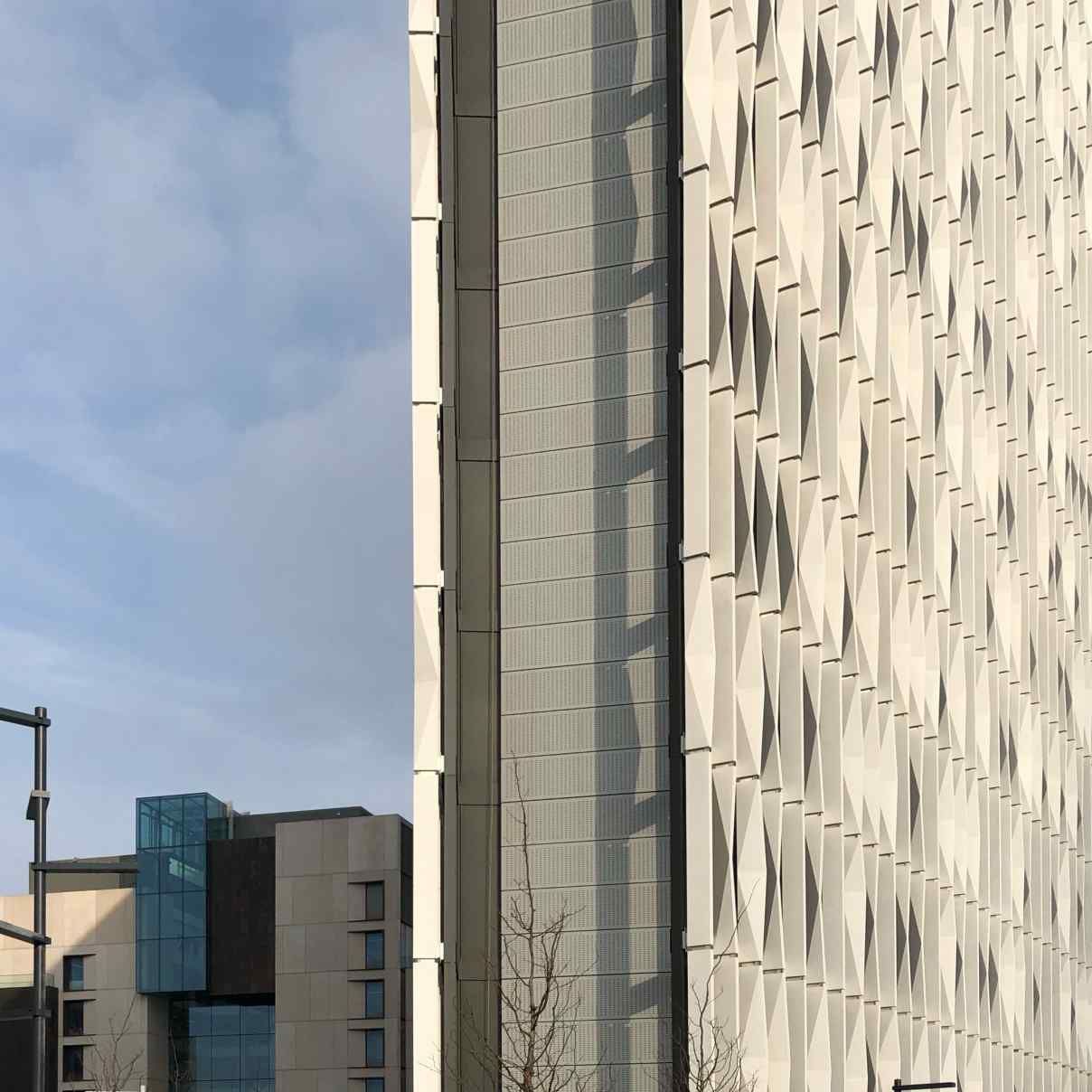Sir Michael, who passed away in August 2019, is the most generous benefactor in the College’s history. The building that now bears  his name was made possible with a £40m gift – around half the cost of construction.
his name was made possible with a £40m gift – around half the cost of construction.
The 54 metre tall is substantially made from the material developed by Sir Michael – ground granulated blast-furnace slag (GGBS). The design pioneers the architectural use of the material in its concrete fins.
GGBS, a by-product from making steel, replaces cement in the production of concrete. Its use as a binder as a replacement to carbon-intensive cement reduces the carbon footprint of concrete manufacture. In this project 50:50 GGBS and cement was used.
Staff began to occupy the building from January 2020. It brings together more than 500 engineers, clinicians and scientists to develop new and affordable medical technologies. They combine the latest medical research and engineering to improve the treatment and diagnosis of diverse medical conditions, from finding ways to cure dementia to creating bionic limbs.
There is laboratory and office space for interdisciplinary, translational research initiatives at the interface of biomedical sciences and engineering, and a clinical facility within the building.
The project was first conceived in 2014 and after design, approvals and procurement, Sir Michael performed the breaking ground ceremony in January 2017. In September 2018 the Topping Out of the building (when construction of a building reaches the highest point) took place. It was fully complete and fitted-out by the end of 2020.
